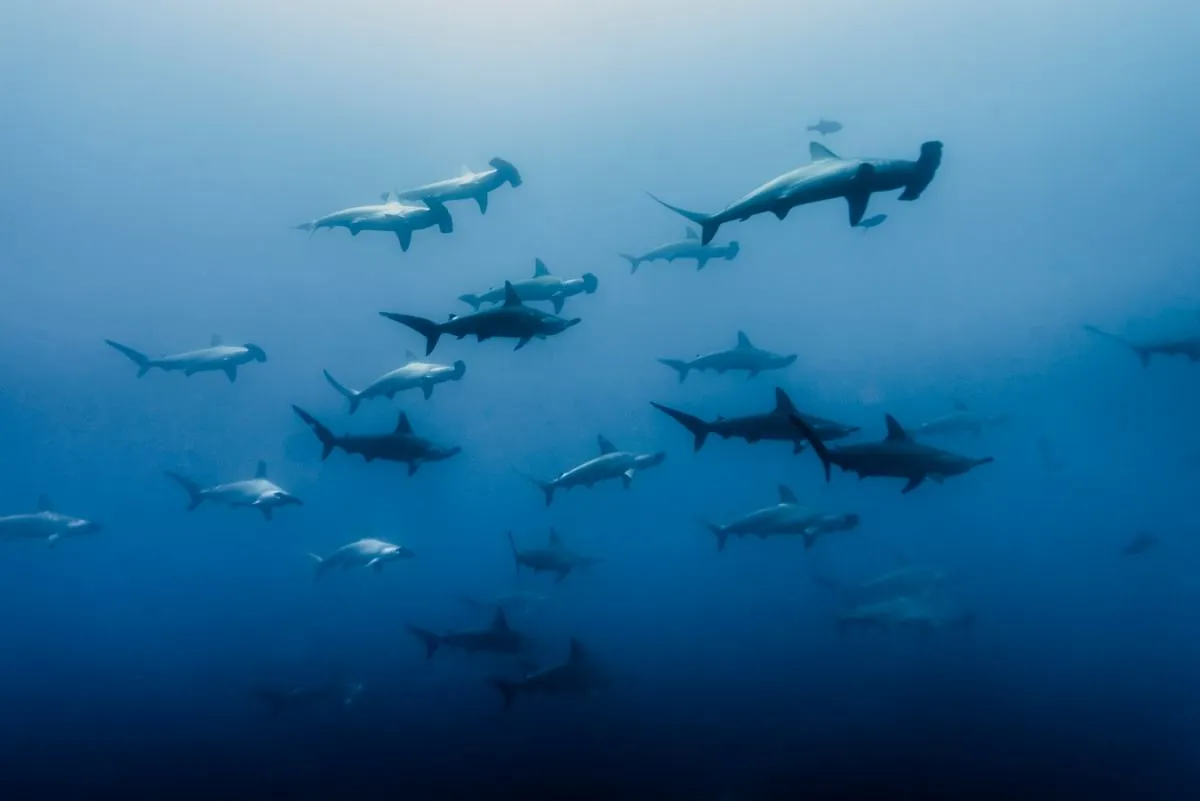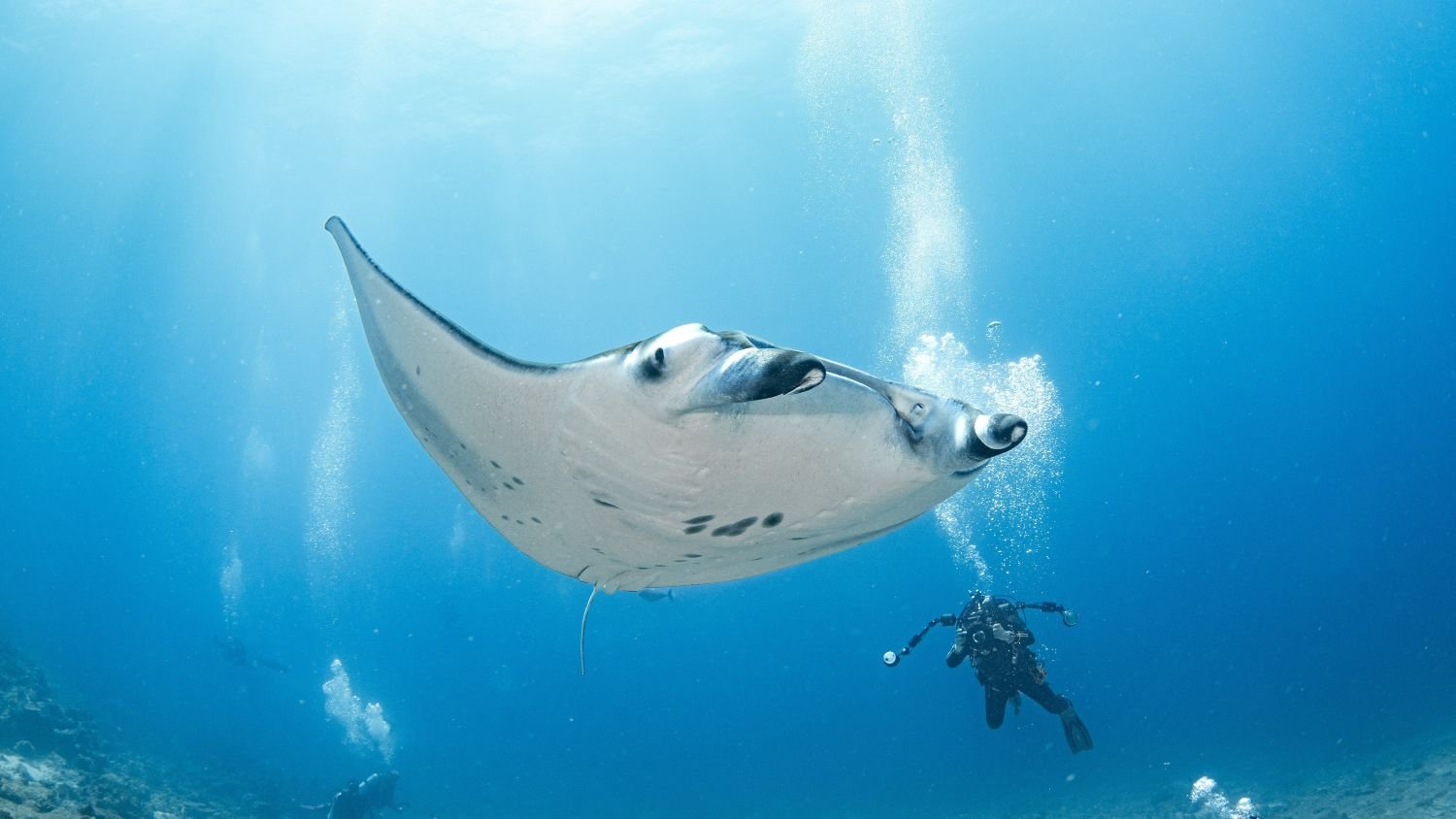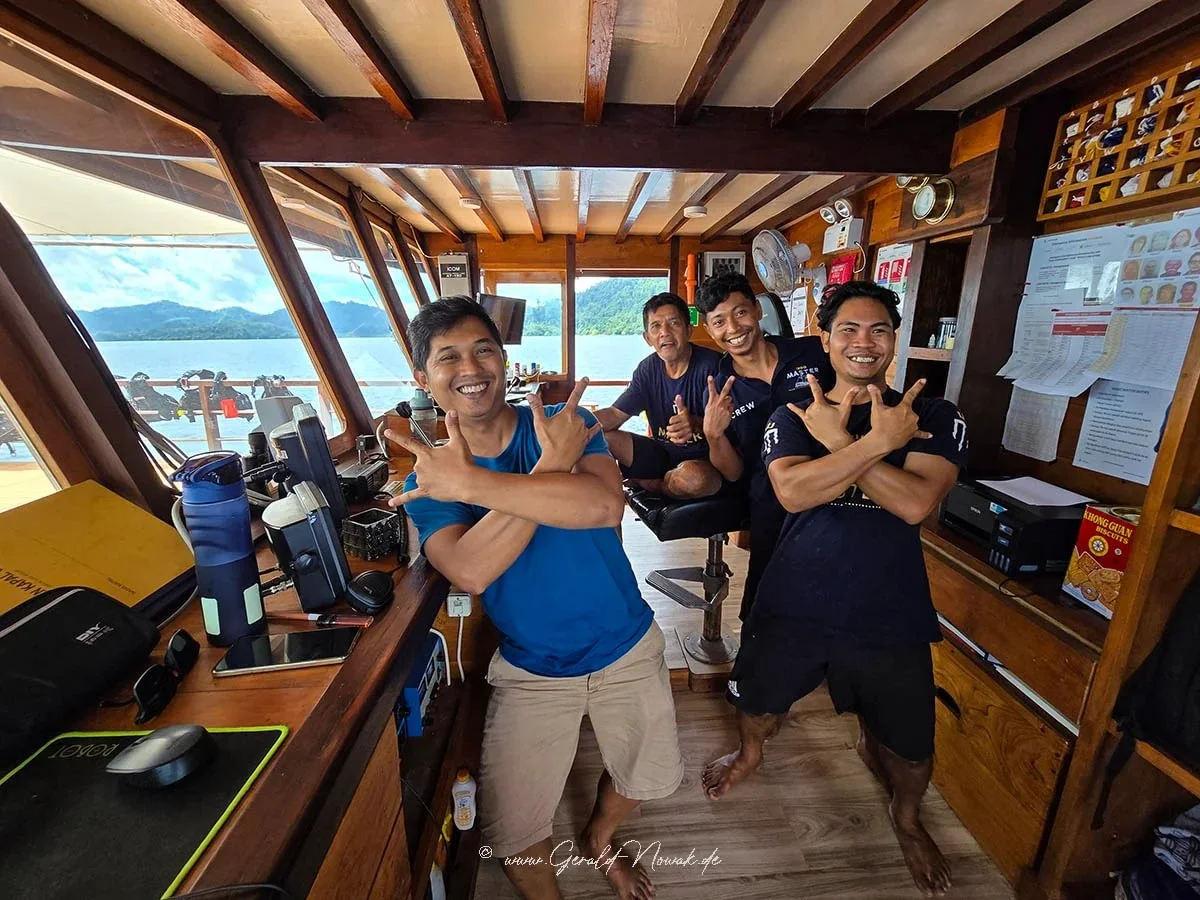When divers talk about Philippines liveaboard diving, the conversation always drifts toward one word: variety. Over 7,000 islands form a playground of reefs, walls, and wildlife, and with Master Liveaboards, you’re not just hopping between dive sites. You’re joining a community of explorers guided by professionals who live and breathe these waters.
From the world-class walls of Tubbataha to the critter-packed slopes of Dauin and the whale sharks of Leyte, the Philippines truly has a liveaboard for every diver, and one vessel built to do it all: Philippine Siren.
Philippines Liveaboard Diving at a Glance
- Tubbataha Reefs: Pristine walls and reefs, strong currents, sharks, and pelagic action but limited to between March and June.
- Southern Leyte: Dived less than some other areas but has whale sharks, walls, and healthy coral. Diving is best November through to February.
- The Visayas: Macro life, night dives, reef variety, and schooling sardines available all year round.
- Master Liveaboards: Expert crews, sustainable practices, and real community spirit, all aboard Philippine Siren; a hand-crafted Indonesian phinisi designed for tropical liveaboard diving
- Ideal For: Everyone from beginners to advanced divers, macro photographers, and pelagic hunters
Tubbataha Reefs: Remote, Raw, Revered
There are liveaboard destinations, and then there’s Tubbataha.
Set in the middle of the Sulu Sea, this UNESCO World Heritage Site is the Philippines’ underwater cathedral: pristine, protected, and profoundly wild.

Accessible only by liveaboard from March to June, Tubbataha rewards divers with crystal-clear visibility (20–50m), strong currents, and walls carpeted in soft corals. Grey reef and white-tip sharks patrol the blue, while mantas, turtles, and schooling barracuda swirl through the current lines.
It’s hard to describe the diving impressions of Tubbataha with any words …. You have to see it, on order to understand this incredible diversity of fish and corals. It’s an amazing place for diving and for learning more about ocean life. Unforgettable moments ….
M1611, Germany, via TripAdvisor
Best for: Pristine reefs, currents, and pelagic action
Season: March–June
Depths: 5m – 40m
Visibility: 20m – 50m
Highlights: Sharks, mantas, turtles, schooling fish, and vibrant coral walls
And the best part? You’re diving it all from the Philippine Siren, with at least three experienced dive guides for just sixteen guests. That’s personal attention and safety baked into every dive.
Southern Leyte: Whale Sharks and Walls
For divers who’ve explored the Visayas and want something off the radar, Southern Leyte delivers. From Pintuyan and Liloan to Sogod Bay, this region balances gentle diving with world-class encounters.
Whale sharks cruise these waters from November to February, and Master Liveaboards works closely with local communities to ensure encounters are responsible and sustainable. No feeding, no chasing; just respectful, natural interactions.
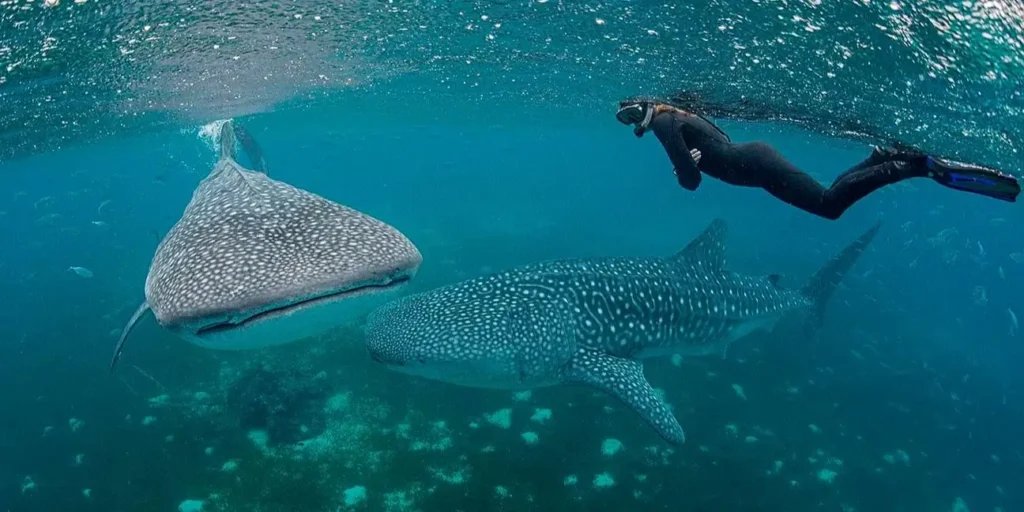
Beyond the whale sharks, Southern Leyte offers rich walls, healthy coral gardens, and sneaky macro life for those who love the small stuff.
Best for: Whale sharks, walls, and a quieter alternative to busier routes
Season: November–February
Depths: 3m – 40m
Visibility: 10m – 25m
Vibe: Relaxed, community-focused, naturally beautiful
The Visayas: Biodiversity on Tap
The Visayas region might be the most fun diving in the Philippines. It’s endlessly varied, accessible, and full of surprises. One day you’re floating over an anemone city, the next you’re hunting for flamboyant cuttlefish or watching a blue-ringed octopus flash its warning colours.
Night Dives and Nudibranchs
When the sun drops, the Visayas turn electric. Night dives reveal the Philippines’ weird and wonderful nightlife: bobtail squid, seahorses, and countless nudibranchs. The Philippine Siren’s dive deck comes alive with that post-dive buzz, with cameras flashing, marine life books open, and crew helping ID the latest finds.
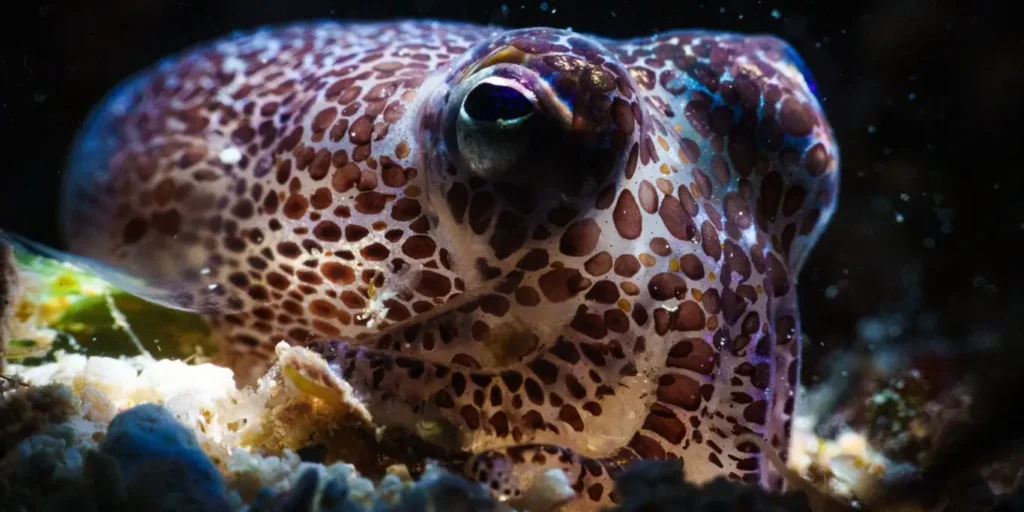
Malapascua: The Thresher Shark Capital
No Visayas itinerary is complete without mentioning Malapascua, the tiny island that put the Philippines on the big-animal map. It’s one of the few places on Earth where you can reliably dive with thresher sharks year-round. Each dawn, these sleek, long-tailed hunters rise from the deep to the cleaning stations around Monad Shoal; a spectacle that’s equal parts serene and electric. While the threshers are the headline act, nearby sites offer walls, soft corals, and abundant macro life. With the Philippine Siren’s experienced guides managing early-morning logistics and shark etiquette, divers get unhurried encounters that feel natural, safe, and unforgettable.
Diverse Dive Days, Effortless Transitions
This is where the Master Liveaboards experience really shines. Efficient dive briefings, expert local knowledge, and a crew who love what they do. Whether it’s Dauin’s black sand macro dives or Apo Island’s coral walls, transitions feel seamless. Just kit up, roll back, and let the ocean do the rest.
Best for: Macro hunters, photographers, and anyone who loves variety
Season: Year-round
Depths: 3m – 40m
Visibility: 10m – 25m
Highlights: Thresher sharks, out of this world macro
Not Just a Liveaboard: A Dive Community at Sea
Master Liveaboards isn’t just a fleet; it’s a floating dive tribe. Life on the Philippine Siren runs on a rhythm that feels like home — early-morning coffee on deck, first dive at sunrise, and laughter echoing through the saloon by nightfall.
This sense of community is what sets Master Liveaboards apart. Guests arrive as individuals, but leave as part of something bigger… a shared story beneath the waves.
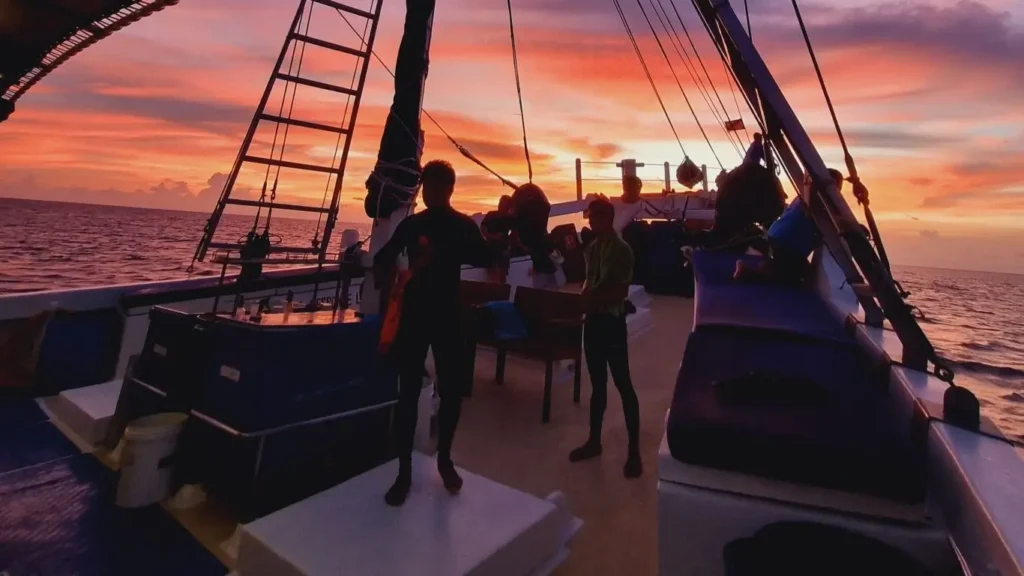
A Day on Board
To say the days are relaxed and focused around diving, eating and relaxing is a given. But in general:
06:00 Sunrise coffee and first dive briefing
07:00 Dive 1 — reef still waking up
09:00 Fresh breakfast cooked to order and a catch-up nap
11:00 Dive 2 — mid-morning drift
13:00 Lunch, relax, nap again, generally relax
15:30 Dive 3 — gentle coral garden or muck site
18:00 Sunset beer or night dive
20:00 Dinner, stories, laughter, and logbooks
Matching the Right Trip to the Right Diver
One of the best things about diving in the Philippines is how easy it is to find an itinerary that matches you — not the other way around. With Master Liveaboards, every route offers its own personality, pace, and payoff. Here’s how to pick your perfect adventure:
- Whale Shark Enthusiasts: Head to Southern Leyte between November and February for the chance to swim alongside these gentle giants. The encounters are ethical, unhurried, and guided by crews who understand the importance of sustainable wildlife tourism.
- Photographers and those seeking variety: The Visayas are your playground. From tiny frogfish to technicolour nudibranchs, there’s endless detail to explore, and it’s great year-round.
- Big Blue Adventurers: If current, reef walls, and sharks call your name, Tubbataha is your pilgrimage. The season runs March to June, and every dive feels like a frontier moment.
- New to Liveaboards: The Visayas are ideal for your first taste of liveaboard life. With calm conditions, great variety, and a welcoming onboard community that makes every diver feel instantly at home.
Not sure which to choose? The Master Liveaboards team are expert matchmakers, they’ll help tailor your trip to your experience, comfort level, and underwater wish list.
Frequently Asked Questions
Tubbataha runs from March to June, while Visayas and Leyte operate from July to February, meaning you can dive the Philippines almost year-round.
Trips are planned to suit varied experience. Whether you’re newly certified or seasoned, dive groups are organised by comfort level, and briefings are detailed but never overwhelming
She’s purpose-built for diving; a hand-crafted Indonesian phinisi with space, comfort, and a dive deck designed by divers, for divers.
Yes. Master Liveaboards partners with local guides who follow strict no-feeding, no-touching policies to ensure natural, sustainable encounters.
Absolutely. Many guests bring non-diving and snorkelling partners. There’s plenty for everyone to enjoy topside, too.
One Archipelago, Infinite Adventures
The Philippines isn’t one destination… it’s many. From Tubbataha’s adrenaline-charged walls to Leyte’s gentle giants and the Visayas’ macro mayhem, there’s a liveaboard here for every diver.
And with Master Liveaboards, you’re not just diving a site. You’re joining a story, one written by passionate crew, expert guides, and the endless sea itself.
“Ready to find your perfect liveaboard diving trip in the Philippines? Explore the Philippine Siren itineraries or talk to our dive team for a personalised recommendation.”
About the Author
Mik Jennings
